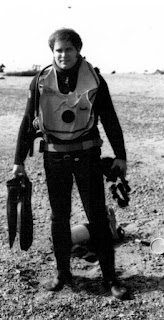For nearly 25 years, I have been an activist for clean energy. We're talking solar, wind, geothermal, hydro, and to a lesser degree biomass. My primary focus has been on hydrogen, a key enabler in a any kind of civilization scale renewable energy paradigm.
Element One is one way of describing hydrogen, because it is the first element on the chemical periodic chart. That makes hydrogen the simplest, most abundant substance in the universe. It is also non-toxic and can be converted to useful work in an internal combustion engine or a device called a fuel cell. When hydrogen is converted to useful work in one of these devices, the exhaust from the process is water vapor.
Hydrogen cannot be found freely nature. It has to be acquired by splitting it away from its bonds with other chemicals, One of those checmicals is h2O...water. One way, the best way, to acquire hydrogen is to split water molecules in a device called an electrolyser. All you need is a supply of water and electricity.
Hydrogen is characterized as an energy carrier because it allows one to convert electrical energy from other sources like the sun, wind, and geothermal, into a storable, clean energy commodity in virtually limitless quantities.
For so many reasons, the world must end its depedence on fossil forms of hydrocarbon energy. And, for the record, nuclear power is not clean energy. It is not the answer.
Our energy future is taking shape right now and it will be powered by clean, renewables, enabled to a great degree by the use of hydrogen as a clean energy commodity.
With my business partner, Bill Hoagland, former head of the US Department of Energy's Hydrogen Development Program, I founded Hydrogen 2000, Inc, a non-profit dedicated to raising public awareness of clean, renewably produced hydrogen energy. Between 1995 and 2005, we produced a series of documentaries and educational videos to showcase renewable forms of energy and hydrogen. We got a lot of recognition for our work. One of our videos, titled,
Renewable Power was awarded a TV Emmy.
So much for the backstory. Now I want to talk about Element One. In 2005, Bill Hoagland and I, along with retired
NREL materials scientist, David Benson, businiessman, Robert Radin, and hydrogen activist Susan Leach, founded a start-up technology business in Boulder, Colorado. We called it Element One. It is built around a patent Bill Hoagland had been awarded for a passive sensor technology for the detection of hydrogen. Bill's technology works. It is a chemical substance that changes color in the presence of hydrogen Such a potentially cheap form of passive sensor technology did not exist until we came along. Element One's technology is a very important part of advancing hydrogen into the role of widely available energy commodity. It is based on a chemo-chromic property that causes a reaction and change in color of the sensor in the presence of hydrogen.
Since our start-up was founded in 2005, we have achieved many technical milestones. We are now working with the U.S. Department of Energy to travel the last steps to commercialization.
In the future, many if not most vehicles will be powered by hydrogen, a storable, transportable fuel made ideally from renewable generated electricity, and those vehicles will operate safely in no small part because of Element One's passive hydrogen sensor technology.
Here is a link to Element One's website
www.elem1.com
























